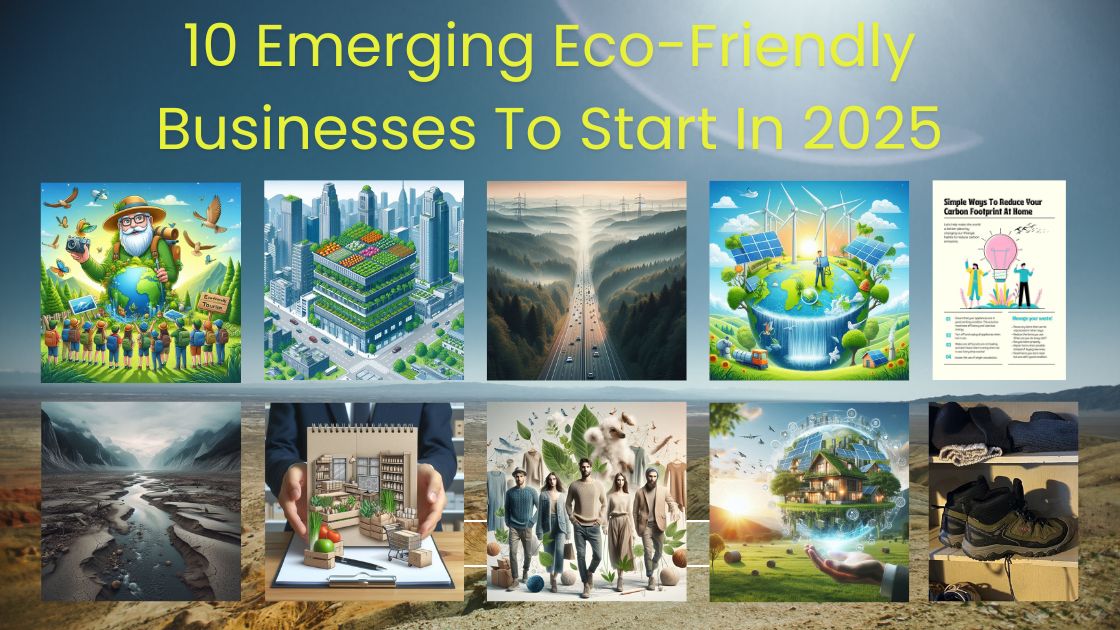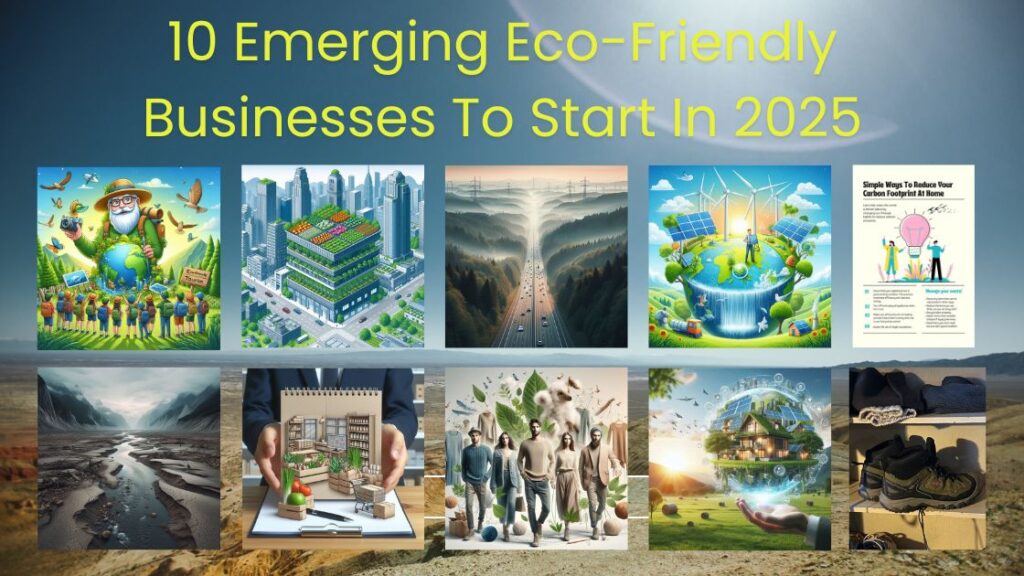
Drill baby, drill, is the battle cry from the White House these days, but it can’t last forever. Fossil fuel is finite. So, despite the current glee sweeping the U.S. over short-term bandaids on the economy, sustainability is non-negotiable for eco-friendly businesses and consumers.
Governments worldwide support green initiatives and offer incentives that make eco-friendly ventures attractive for entrepreneurs.
Many new eco-friendly businesses are emerging, focusing on sustainable practices and products that appeal to environmentally conscious consumers.
Establishing eco-friendly businesses is increasingly vital in today’s economy, where consumers are seeking products that align with their values.
Eco-friendly businesses are not just a trend, but a fundamental shift in how we approach consumption and sustainability.
Innovative eco-friendly businesses are leading the charge in making sustainable practices mainstream, demonstrating that environmental responsibility can coexist with profitability.
With policies pushing for reduced emissions and renewable energy, starting an eco-friendly business in 2025 isn’t just about having a good idea—it also supports a worldwide shift towards sustainable living.
Products and services that don’t compromise the environment are in increasing demand. I have to give a shout-out to Gen Z for that. According to Capital One Shopping, they’re mostly buying online.
This is a massive opportunity for businesses that can meet these expectations while contributing to positive environmental change. Every indication points to these demands growing exponentially.
Specific sectors within the green economy are primed for explosive growth.
Renewable energy is chief among them, with innovations in solar, wind, and hydroelectric power redefining how we think about energy consumption.
The growth of eco-friendly businesses reflects a broader societal commitment to sustainability, with consumers actively supporting brands that prioritize environmental impact.
In the renewable energy sector, eco-friendly businesses are reshaping our energy landscape and influencing consumer choices.
Similarly, sustainable agriculture is on the cusp of a revolution. Vertical farming and lab-grown meat are not just futuristic concepts; they’re rapidly becoming viable solutions for feeding a growing global population without depleting the earth’s resources.
So, while the U.S. is stepping back to a time of unsustainable glory and affluence (for fatcats), trends reflect the broader movement towards a greener future, and businesses in 2025 are perfectly positioned to ride this wave.
Opportunities beckon in areas from eco-friendly products to innovative waste reduction methods. Embracing these prospects means you’re not just starting a business but becoming part of a larger community driving essential environmental solutions.
Top 10 Emerging Eco-Friendly Businesses to Start in 2025
The renewable energy sector continues to offer incredible opportunities. Solar, wind, and hydroelectric energy solutions not only provide alternatives to fossil fuels but can also mean serious savings for consumers in the long run.
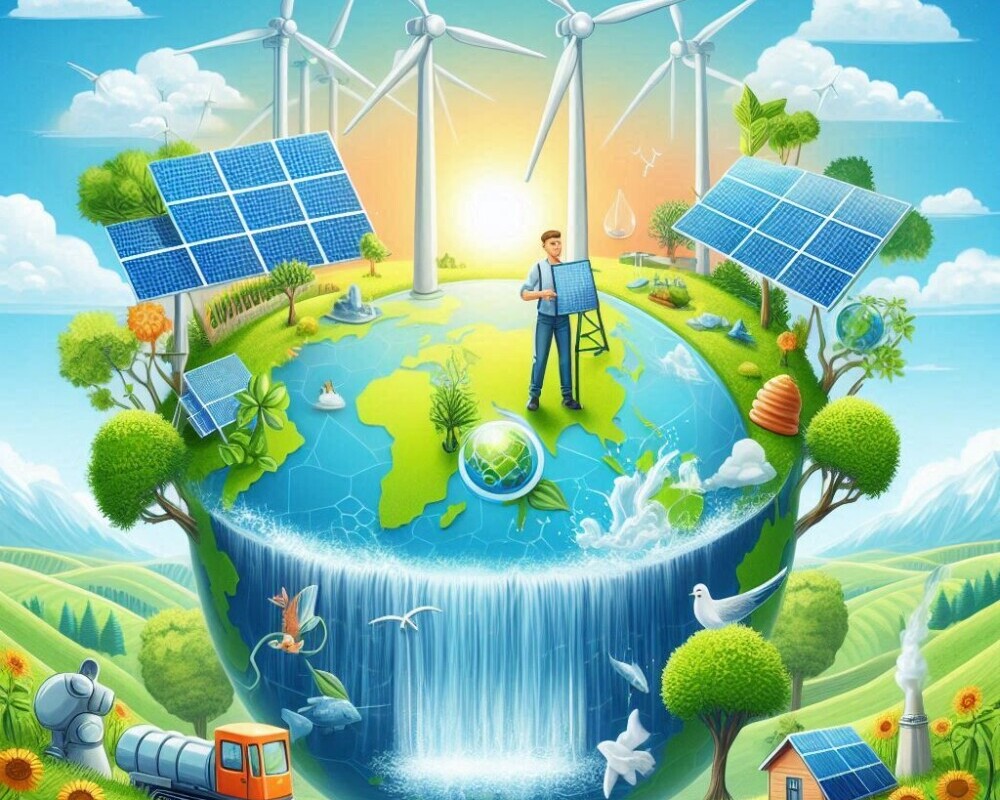
Fun Fact: The sun provides more energy to the Earth in one hour than the entire world consumes in a year. If we could harness just a fraction of this, fossil fuels would be history!
I hear a lot of griping about how ugly windmills are and how dangerous they are to birds, especially eagles. Flower Turbines has stepped forward to combat that stereotype. They build beautiful wind turbines that are highly efficient and bird-friendly too.
Sustainable agriculture is another booming area worth exploring. Urban and vertical farming are making it possible to grow food efficiently in metropolitan areas.
Eco-friendly businesses are crucial in developing solutions that reduce our carbon footprint and promote sustainable living.
As electric vehicles become more popular, eco-friendly businesses are at the forefront of this transformation.
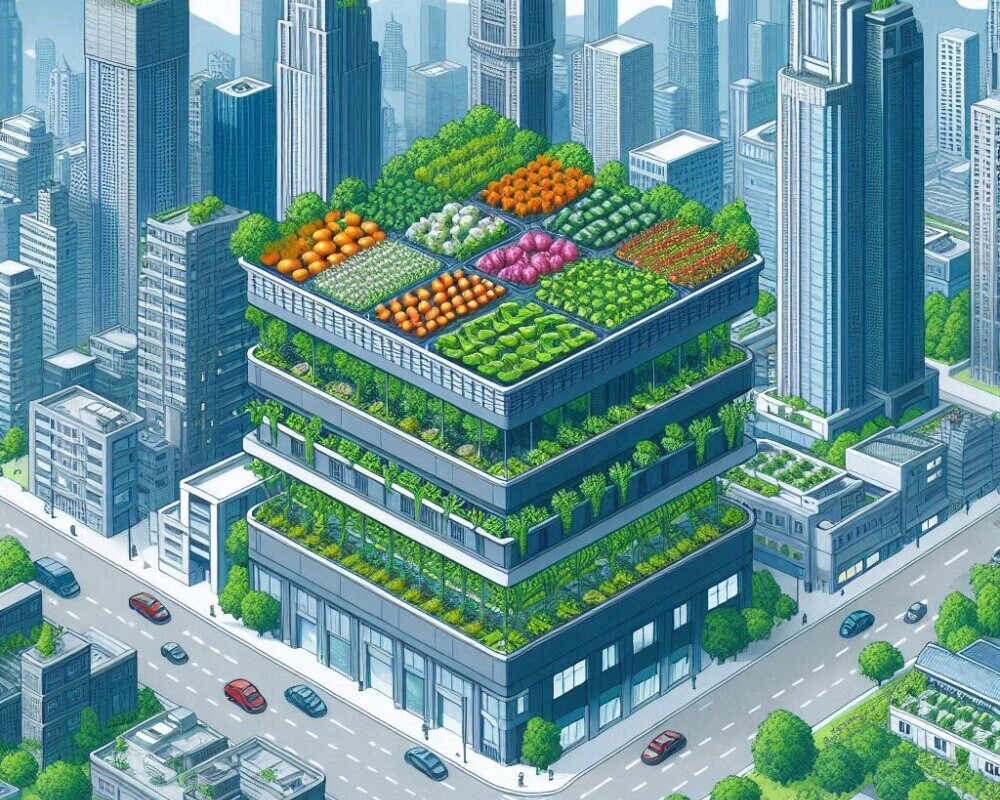
Plus, with plant-based foods and lab-grown alternatives gaining traction, even traditional food markets are ripe for disruption. These emerging fields are about finding new ways to satisfy the world’s hunger sustainably.
Fun Fact: Vertical farming uses up to 95% less water than traditional farming—and it can grow crops in warehouses, skyscrapers, or even shipping containers.
The transport sector is also evolving fast with electric and autonomous vehicles. There’s substantial room for innovation, whether it’s manufacturing EVs, building charging infrastructure, or developing software for self-driving cars.

Fun Fact: The first practical electric car was built in 1884—over 130 years before Tesla made EVs cool again! Electric vehicles are so quiet that regulators in some countries require artificial engine sounds to alert pedestrians.
The circular economy is more than just a buzzword; it’s a blueprint for reducing waste and maximizing resources.
Businesses focused on upcycling, recycling, and transforming waste into new products can thrive as they cater to a consumer base keen on minimizing their environmental footprint.
Fun Fact: Recycling one aluminum can saves enough energy to run a laptop for three hours. Imagine the impact of a whole circular economy!
Speaking of Keen, the uppers of my Keen hiking boots are made with recycled plastic bottles, which greatly enhances their waterproof technology. What a cool idea!
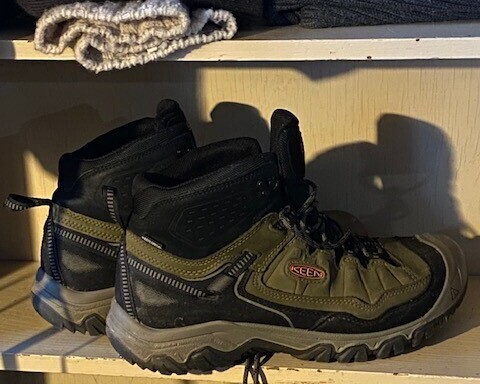
Green building and sustainable construction aren’t just about aesthetics; they’re about creating energy-efficient spaces made with eco-friendly materials.
As more cities and countries implement greener architecture, there’s a demand for businesses that provide solutions that support this shift.
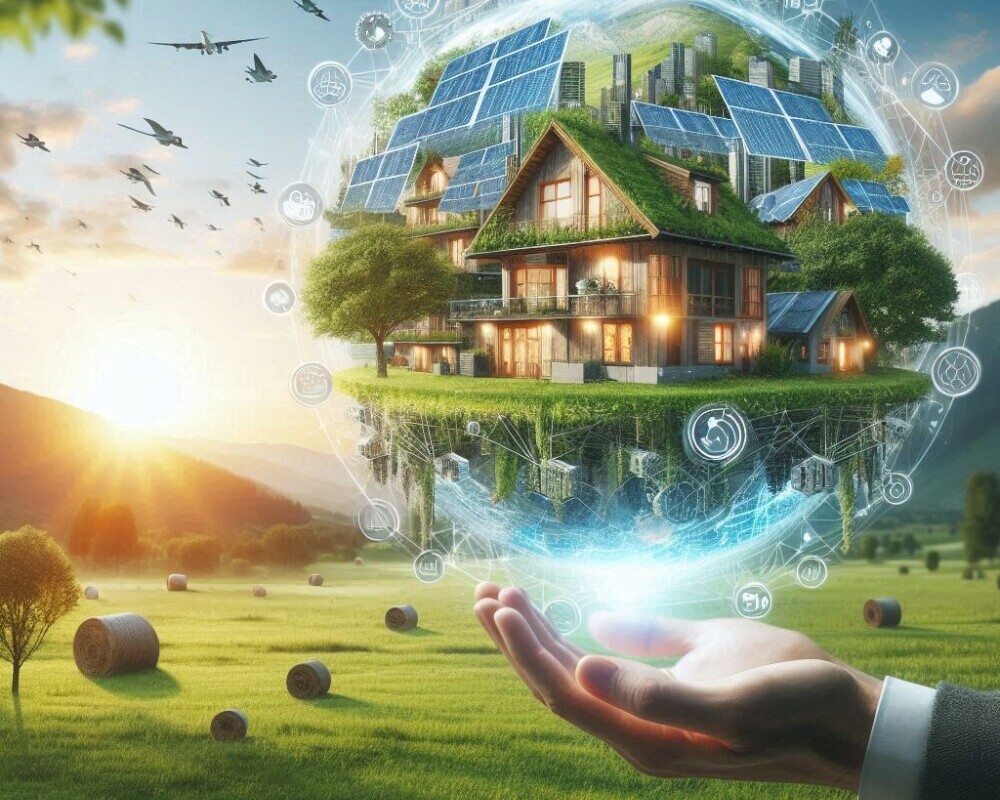
Fun Fact: Hempcrete, a sustainable building material made from hemp, is not only carbon-negative but also resistant to fire and mold.
Surprisingly, fashion is a massive player in sustainability (I’m not referring to Lady Gaga’s meat suit).

Eco-friendly businesses play a vital role in promoting sustainable consumer behavior and environmental stewardship.
Eco-friendly fashion involves using ethical manufacturing processes and sustainable materials like wool, cotton, and hemp. Consumers are increasingly informed and selective, demanding slow fashion that doesn’t cost the earth.
Fun Fact: The fashion industry is the second-largest consumer of water, but eco-friendly fabrics like organic cotton and Tencel are helping to turn the tide. Some brands now make clothes from recycled coffee grounds, pineapple leaves, and even orange peels!

Water scarcity is a pressing issue that has spurred a wave of new water purification and conservation technologies. Advanced filtration systems and water-efficient solutions are critical in this fight, making them fertile ground for entrepreneurs committed to making a difference.
Fun Fact: NASA developed a water purification system for space missions that’s now being used to provide clean water in remote areas on Earth. Desalination plants can turn seawater into drinking water, but only 1% of the world’s water is currently desalinated.
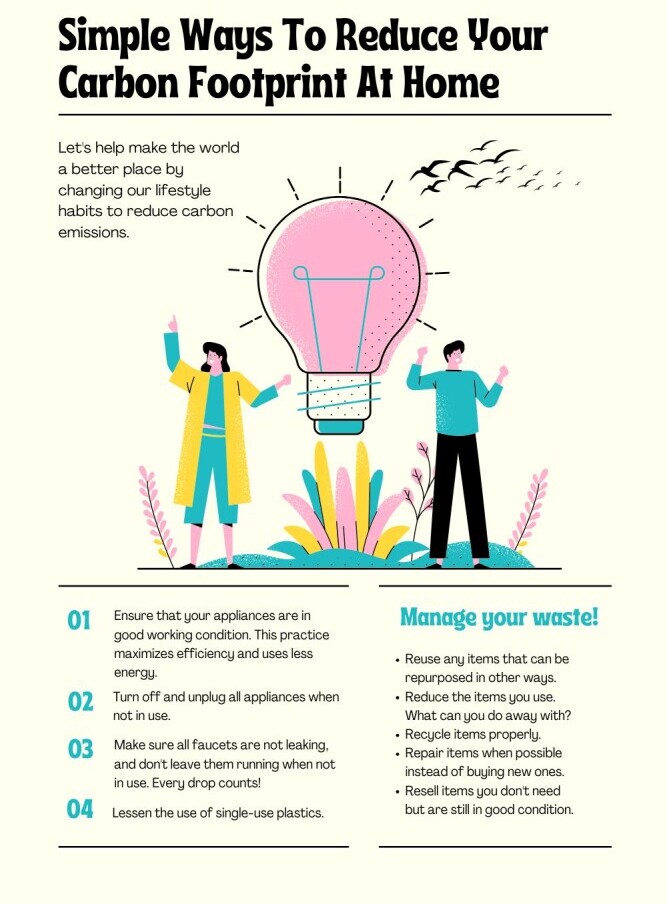
Carbon capture and storage technologies are becoming vital as we seek ways to curb climate change. New methods for CO₂ removal, whether through innovative technologies or naturally inspired solutions, are poised to become an integral part of this sector.
Fun Fact: A single direct air capture plant can remove as much CO₂ from the air as 40 million trees. Some companies are turning captured carbon dioxide into products like vodka, diamonds, and concrete.
I want to take a quick second to talk about trees. Forty million sounds like a lot of trees, but it is only .001% of the estimated 3.4 trillion trees on Earth. A healthy hardwood tree can capture 48 lbs of carbon per year. There are 400 billion estimated hardwood trees on Earth. 400X48=8.709 trillion kgs of carbon captured per year by hardwood trees. Other plants and trees also photosynthesize. We must take care of our green-leaved friends to stay healthy and enjoy our beautiful planet.
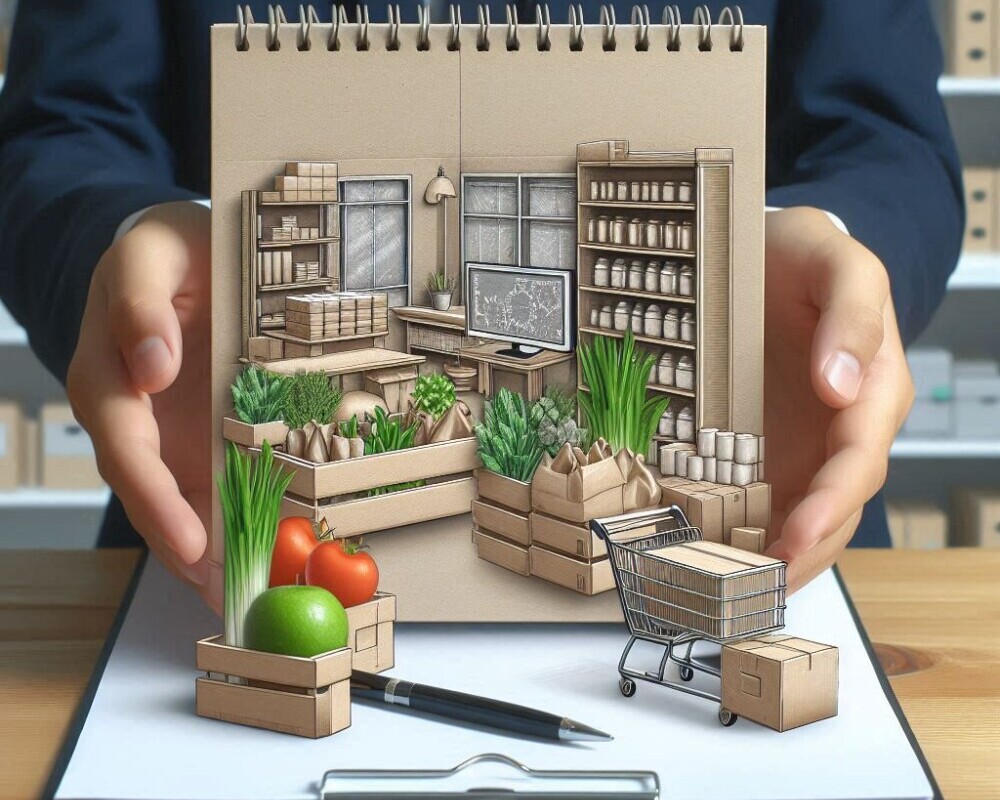
Packaging shouldn’t be an afterthought, especially with rising concerns over plastic waste. Entrepreneurs focusing on sustainable packaging solutions stand to gain as consumers and businesses shift towards biodegradable and reusable alternatives.
Fun Fact: Mushroom-based packaging can decompose in a backyard compost bin in just 30 days. Biodegradable packaging made from seaweed could completely replace plastic wrap—and it’s even edible!
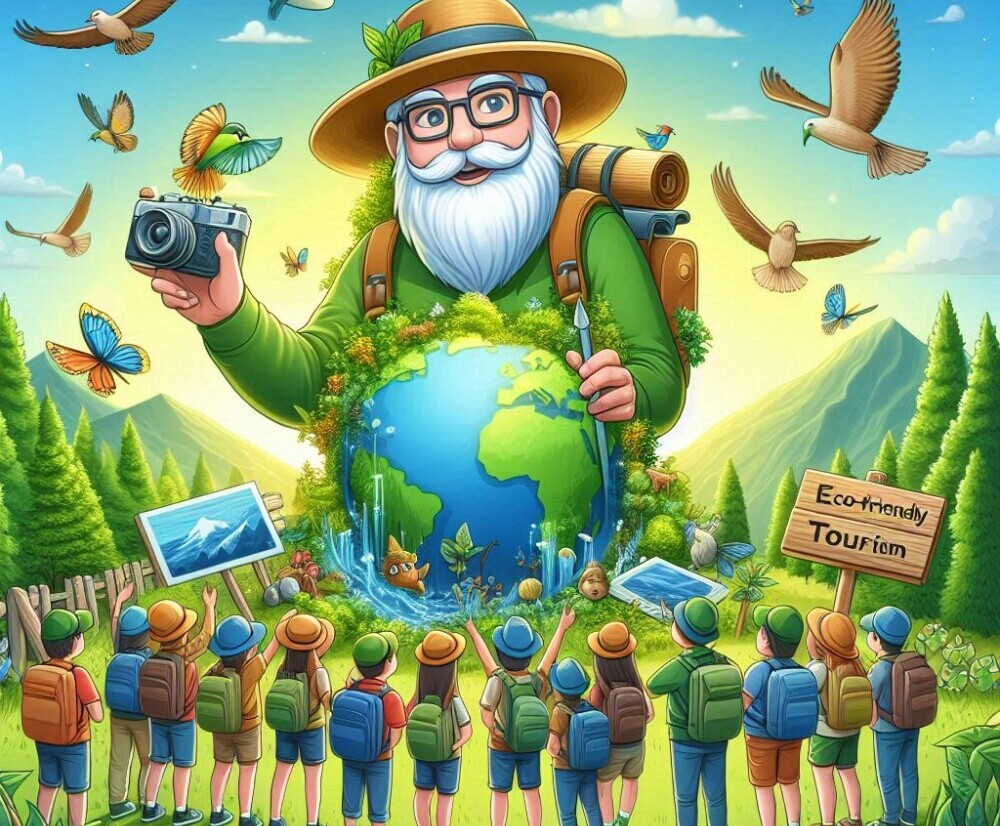
Eco-tourism is set to redefine how we travel as more people look for low-impact vacations that emphasize conservation and sustainability. This trend supports businesses that provide authentic, eco-friendly travel experiences through accommodations or carefully organized tours.
Fun Fact: Costa Rica generates over 99% of its electricity from renewable sources and is one of the top destinations for eco-tourism. Some eco-lodges are completely off the grid, using solar power, rainwater collection, and composting toilets to minimize their environmental impact.
Investing in eco-friendly businesses offers consumers the chance to support environmental initiatives actively.
How to Get Started with an Eco-Friendly Business
Starting an eco-friendly business begins with market research. Understanding what your potential customers need and what’s already available can help identify a niche your business can fill.
Funding is often a hurdle, but there are plenty of green finance options out there. Seek out grants specifically tailored for sustainable startups.
The growth of eco-friendly businesses is a sign of changing consumer preferences that favor sustainability.
Grants are often better than loans because most of them don’t need to be paid back. You will likely have to meet specific criteria to satisfy the terms of the grant.
If grants don’t work out, look into investments and eco-friendly loans designed to support green ventures. Websites and local business development centers often provide resources and guidance on finding these financial opportunities.
Engage with the community and network with other eco-focused businesses. Collaboration can lead to shared opportunities and provide a platform for exchanging valuable knowledge.
It also bolsters your credibility within the green sector.
Digital platforms like learning how to quickly build a website can aid efficiency and help you reach larger audiences with your environmental message, supporting scalability while maintaining sustainability.
Benefits of Eco-Friendly Entrepreneurship

By developing solutions that cut emissions, reduce waste, or conserve resources, your business directly safeguards the planet for future generations. I think we can all agree on that.
Beyond doing good, there’s the potential for significant financial gain.
As consumer demand for green products rises, businesses committed to sustainability often see higher growth rates. Participating in this shift can position your business at the forefront of an expanding market.
Here’s the thing. Nobody can save the planet by themselves, but every small part taken contributes to the whole. You don’t have to build a carbon-sequestration plant. But you could open a sustainable products store online or with a brick-and-mortar storefront (most sustainable products are purchased online these days BTW).
As an online sustainability expert, you could open an e-commerce store with Shopify or promote eco-friendly goods as an affiliate marketer at Wealthy Affiliate Marketing.
Many investors now prioritize sustainability in their portfolios, recognizing eco-friendly businesses as future-proof investments. This means easier access to capital for companies that demonstrate a strong commitment to environmental responsibility.
Consumers tend to favor businesses that make sustainable choices, enhancing customer loyalty and leading to word-of-mouth referrals.
Pursuing a green business allows you to be part of a movement larger than any one company. It’s about contributing to a collective effort towards a more sustainable future while also enjoying the tangible rewards of running a successful, impactful business.
Challenges in the Eco-Friendly Business Landscape

Stepping into an eco-friendly business comes with challenges.
Regulatory frameworks can be complex and vary significantly by region, so it’s crucial to stay informed about the rules and standards relevant to your industry. Establishing compliance from the start avoids costly setbacks down the road.
Consumer skepticism poses another challenge.
While demand for sustainable products is growing, not all consumers are convinced by green claims. To overcome this, transparency is key.
Demonstrating genuine eco-friendly practices, backed by clear and honest communication, helps build trust and credibility.
Financial considerations are also pivotal. Starting and maintaining a green business often has higher initial costs due to the sustainable materials and technologies involved. That is why I mentioned affiliate marketing. It’s a great low-cost way to get started in the business.
Careful planning and budgeting, along with seeking out available grants and subsidies, can alleviate some of these financial pressures.
The market is competitive, and distinguishing your eco-business can be challenging. Focus on innovation and unique value propositions that set your offering apart.
The commitment of eco-friendly businesses to reduce waste and enhance sustainability practices positions them as leaders in the market.
For instance, integrating cutting-edge technology or creating a strong brand narrative centered on sustainability can give you a competitive edge.
Lastly, balancing sustainability with profitability requires ongoing adjustment. Efficiency improvements, increased resource optimization, and vigilant monitoring of new sustainability trends can help keep your business aligned with both financial and environmental goals without having to compromise on either.
By adopting eco-friendly practices, businesses can improve their brand image and attract a loyal customer base.
Success Stories of Leading Eco-Friendly Businesses
Exploring successful eco-friendly businesses can be an invaluable source of inspiration. These stories offer practical lessons on what works and shed light on common pathways to success in the green marketplace.
Take, for instance, companies that have made substantial impacts by embracing renewable energy. Businesses like Tesla and SunPower have not only innovated within their fields but have also reshaped consumer perceptions about solar and electric power technologies.
Innovations in sustainable agriculture have also gained momentum. Enterprises like Beyond Meat and Oatly have successfully tapped into the plant-based food craze, demonstrating that alternatives can be just as desirable, if not more so, than traditional options./
“It is one world. And it’s in our care. For the first time in the history of humanity, for the first time in 500 million years, one species has the future in the palm of its hands.”
— David Attenborough
In conclusion, eco-friendly businesses are essential for paving the way toward a sustainable future.
When it comes to circular economy models, Patagonia stands out as a leader. Their approach to products made with recycled materials offers insights into how a company can extend product life cycles while securing customer loyalty.
In fashion, brands like Stella McCartney prove that luxury can coexist with sustainability. By focusing on ethically sourced materials and production processes, they set a precedent for what environmentally responsible fashion can look like.
Technology continues to revolutionize water conservation. Companies like Xylem are pioneering advanced water management systems that tackle water scarcity issues on a global scale, setting benchmarks in both innovation and impact.
These successful eco-businesses have several traits in common: a commitment to innovation, a strong brand narrative around sustainability, and the ability to effectively communicate their core values to the public.
Drawing from their experiences, you can tailor these principles to suit your unique business aspirations.
Eco-Friendly Product and Service Development
Creating eco-friendly products and services requires a thoughtful approach.
- Start with a clear understanding of your materials and supply chain. Choosing sustainably sourced materials or ingredients can make a huge difference in the environmental footprint of what you’re offering.
- Collaborate with suppliers who share similar environmental commitments.
- Design plays a crucial role in eco-friendly innovation. Whether it’s minimizing waste through smart design techniques or reimagining traditional products with a focus on sustainability, a well-thought-out design is key.
- Think about ways to extend product life or create with end-of-life disposal in mind.
- Consumers love transparency. Clearly communicate what makes your product or service eco-friendly.
- Use certifications and eco-labels to provide evidence of your claims, building trust and credibility with your audience.
- Customer feedback is a goldmine for businesses. Engage with your customers to understand their needs and desires and adapt your offerings accordingly.
Consider the digital realm, too. Online platforms can enhance your reach and engagement while minimizing your carbon footprint.
A strong digital presence not only markets your offerings but also reinforces your sustainability message. I’ll be happy to help you with a blog if you like. That’s my forte.
Ultimately, remember the importance of innovation. Keep abreast of the latest developments in sustainability practices and technologies. Continuously improve your offerings to maintain relevance and growth in the dynamic eco-marketplace.
Conclusion
Starting an eco-friendly business in 2025 offers lucrative opportunities driven by consumer demand and satisfies a need for companies prioritizing sustainability to thrive.
While challenges are inherent, they present opportunities for innovative solutions and collaborations that can define your business’s trajectory.
Eco-friendly entrepreneurship allows for personal and professional fulfillment and contributes significantly to a better planet.
Launching a green startup is paved with opportunities to build a meaningful legacy.
As we move towards a more sustainable world, your business could be an influential part of that transformation, leading the way in eco-innovation and responsible growth that stifles the cry of drill baby, drill.
Dave

Hi, fellow Earth-lovers! I hope you enjoyed this article and got something from it, even if it was from the fun facts bits. I’ve been blogging for a couple of years at Wealthy Affiliate Marketing. I can help you build a blog or get on YouTube, etc. All you need to do is click on this link to go to Wealthy Affiliate and look at it to see if I can help you get started. Have a good one! -Dave
Yourturnmarketing.com

